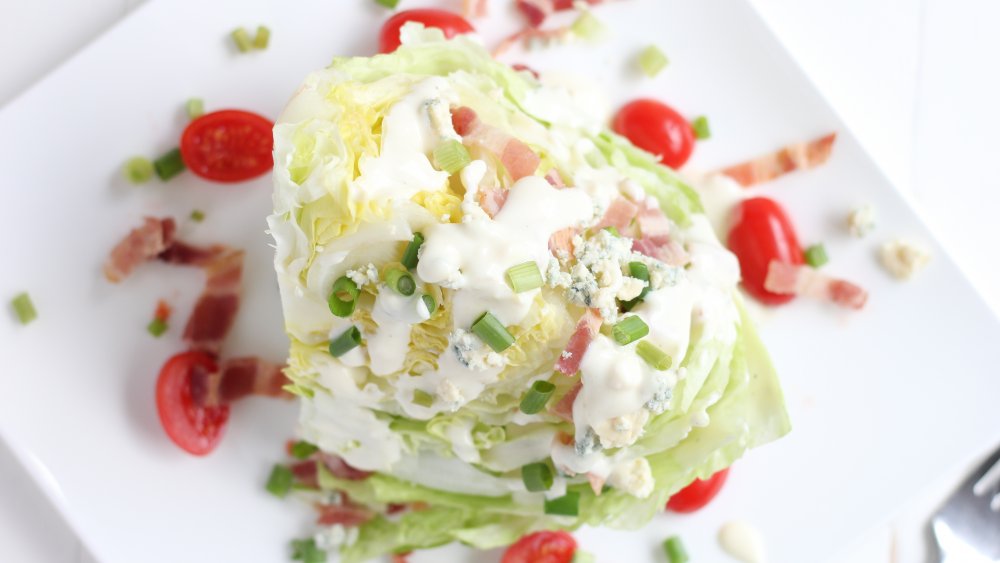Your Salad Might Be Hurting Your Diet More Than You Realize
Most of us equate eating salads regularly with a trimmer figure and better health, but in some circumstances that tasty salad might be doing just the opposite. For example, Men's Journal reports that a hamburger and an order of small fries at McDonalds contains about 480 calories, while a Premium Southwest Salad with grilled chicken and ranch dressing is 530 calories, not to mention there are nine additional grams of fat in the salad compared to the "unhealthy" burger and fries. However, it's not just fast food salads you need to be wary of if you're trying to avoid excess hidden calories.
Sometimes, the healthiest-sounding option on the menu isn't really that healthy at all. That's why, when ordering or preparing a salad, it's important to pay attention to the details, since just a few high-calorie, high-fat toppings can make all the difference. For instance, the California Pizza Kitchen Waldorf Chicken salad sounds pretty healthy, with ingredients like grapes, green apples, candied walnuts, crisp celery, baby greens, and Gorgonzola cheese tossed with a housemade Dijon balsamic vinaigrette (via CPK). However, Eat This, Not That says that the salad actually packs in a massive 1,320 calories (not to mention 27 grams of sugar and 94 grams of fat). That's more calories than an entire pint of Ben & Jerry's Cannoli ice cream (via Ben & Jerry's)! But how can you avoid ordering such calorie-dense salads when they sound so healthy based on their ingredients list?
How to spot an unhealthy salad
Unfortunately, we don't always have the nutrition facts in front of us or time to inspect them when we're ordering at a restaurant or picking something up on the go, which can lead to bad salad choices. To avoid the most unhealthy salad options, keep an eye out for clearly caloric toppings, like creamy dressings, cheese, fried chicken or shrimp, bacon, mayonnaise, and carbs in the form of croutons, wonton strips, or even a taco shell bowl, since these are certain to increase the calorie content of your salad without adding any real nutritional benefits (via WebMD). The Huffington Post says it's also important to be wary of the massive portion sizes often served at restaurants, as too much of a good thing is still too much.
While you're at it, scan the salad description for some of the more deviously unhealthy ingredients, like sugar-laden candied nuts, dried fruit, and even pre-roasted veggies, which The Healthy says can hide lots of oil and salt depending on how they're cooked. Dressing is another pitfall since it can contain lots of oil, salt, and sugar, so to reliably reduce the calories in a restaurant salad, simply order the dressing on the side. That way, you are in control of how much you use, instead of trusting the restaurant. Finally, not to mention counterintuitively, keep an eye out for the low-fat dressings. They sound healthier, but WebMD asserts they are in fact often loaded with extra salt and sugar to compensate.

